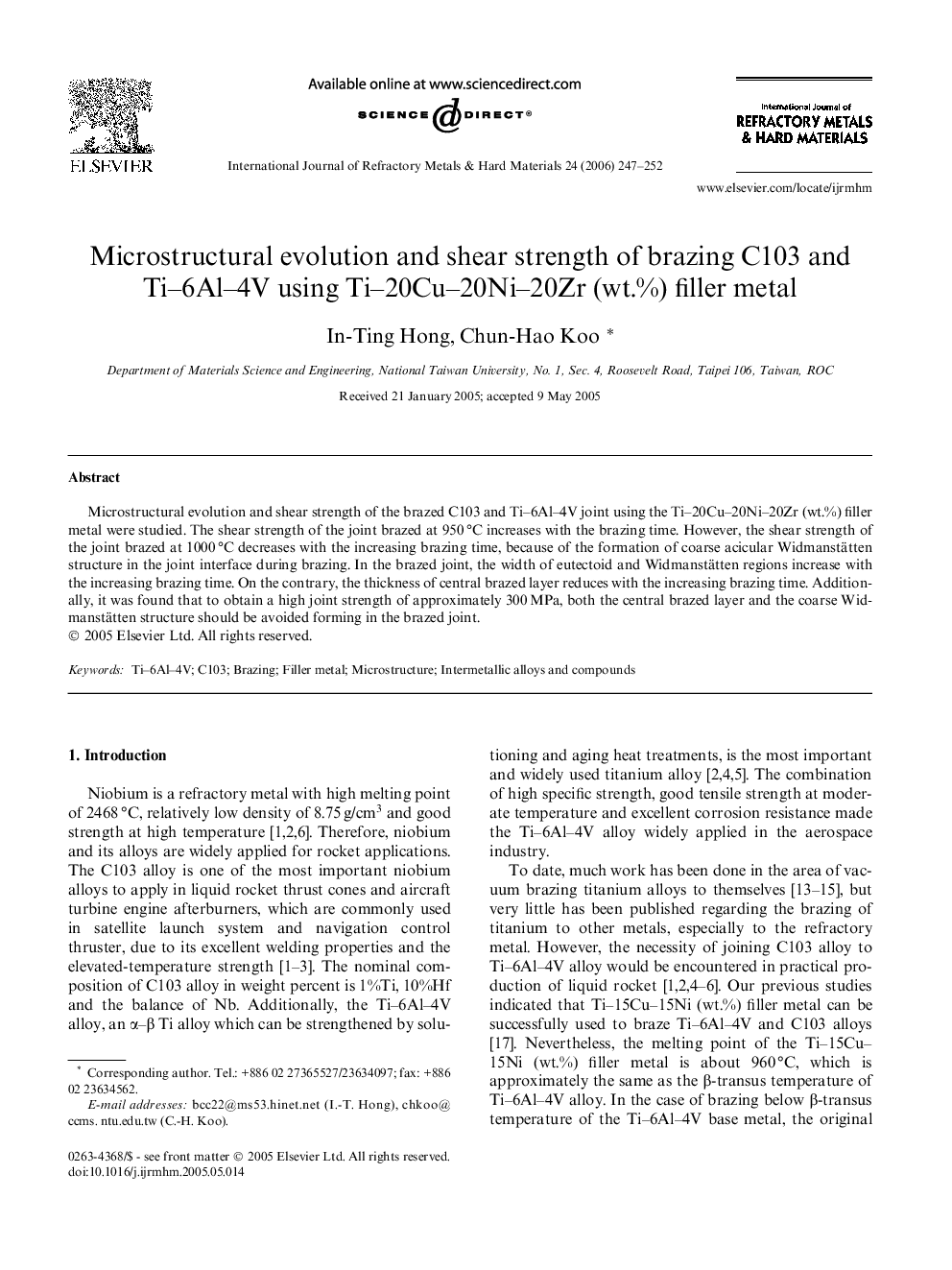| Article ID | Journal | Published Year | Pages | File Type |
|---|---|---|---|---|
| 1604837 | International Journal of Refractory Metals and Hard Materials | 2006 | 6 Pages |
Abstract
Microstructural evolution and shear strength of the brazed C103 and Ti-6Al-4V joint using the Ti-20Cu-20Ni-20Zr (wt.%) filler metal were studied. The shear strength of the joint brazed at 950 °C increases with the brazing time. However, the shear strength of the joint brazed at 1000 °C decreases with the increasing brazing time, because of the formation of coarse acicular Widmanstätten structure in the joint interface during brazing. In the brazed joint, the width of eutectoid and Widmanstätten regions increase with the increasing brazing time. On the contrary, the thickness of central brazed layer reduces with the increasing brazing time. Additionally, it was found that to obtain a high joint strength of approximately 300 MPa, both the central brazed layer and the coarse Widmanstätten structure should be avoided forming in the brazed joint.
Related Topics
Physical Sciences and Engineering
Materials Science
Metals and Alloys
Authors
In-Ting Hong, Chun-Hao Koo,
